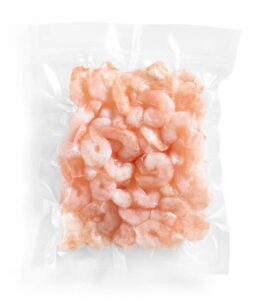Many people associate fresh tasting frozen food with salt, high amounts of preservatives, and mushy texture. However, if you choose the right frozen food supplier, they can provide various quality products that maintain their original flavour and nutrition.
For instance, a few brands offer low-sodium options rooted in modern health definitions. They also have a variety of cuisines and global flavours inspired by restaurants to appeal to diverse consumers.
1. Choose a supplier with a proven track record.
 Fresh food is usually higher in hydration, enzymes and healthful fats than frozen foods. However, some fresh foods may be low in nutrients due to their shelf life before they get to the grocery store. Similarly, many prepackaged frozen meals are high in sodium and added sugars for preservation. The trick to finding healthier frozen foods is to know what to look for.
Fresh food is usually higher in hydration, enzymes and healthful fats than frozen foods. However, some fresh foods may be low in nutrients due to their shelf life before they get to the grocery store. Similarly, many prepackaged frozen meals are high in sodium and added sugars for preservation. The trick to finding healthier frozen foods is to know what to look for.
While it is true that freezing food does diminish some nutrients, it is a natural preservative without the need for chemical additives. In addition, many frozen foods are picked at their peak ripeness and then quickly frozen to preserve the flavour and nutrients.
Frozen food is also often more affordable than fresh foods, especially regarding fruits and vegetables. This is because frozen foods do not need to be shelled or peeled, and the cost of removing these parts of the food increases its overall price. Additionally, frozen foods do not lose as much nutrient content as fresh food when stored and shipped long distances before reaching the grocery store.
Choosing the right fresh tasting frozen food can be an easy way to reduce meal prep time. However, selecting a supplier with a proven track record is important. This will ensure you get the highest quality products for the best possible price.
2. Choose a supplier with a wide range of products.
Frozen foods may have a bad reputation for their mushy textures, skimpy portions, and excess sodium, but many options can be healthier than most items in the freezer aisle. Whether you’re shopping for your family or yourself, it’s important to choose the best-frozen meals possible to ensure that your eating is high quality and nutritious.
When choosing the right frozen entrees, look for options with few ingredients and whole foods (think fruits, vegetables, and lean proteins). You also want to avoid frozen entrees that contain high amounts of added sugars, sodium, and saturated fat. Additionally, be careful when reading labels and look beyond claims like “organic,” “plant-based,” and “natural.” These terms can mean different things to consumers but don’t necessarily guarantee a healthy frozen meal.
3. Choose a supplier with a proven process.
The best frozen food is made with high-quality ingredients and a process that doesn’t compromise the integrity of the product. When it comes to frozen vegetables, frozen meats and seafood, choosing a supplier with a proven process is important. A quality supplier will use a high level of hygiene and ensure the products are safe to consume. They will also use quality packaging to protect the products and ensure they reach customers in good condition.
When it comes to frozen fruits and vegetables, choose those without added sauces or sugar. These options are lower in sodium and saturated fat and can be a good way to eat more fruits and vegetables when not in season.
Frozen foods typically cost less than fresh foods because they don’t have to meet the same sourcing and time-sensitive transportation requirements. However, the price of frozen food can vary based on location and season. It’s important to research the available options and shop for the best prices.
4. Choose a supplier with a proven quality system.
Frozen foods often get a bad rap for being high in sodium and additives, but plenty of health-conscious frozen entrees are made with wholesome ingredients. When choosing a supplier, it’s important to research and choose one with a solid track record of quality products. You can also ask for case studies and references to better understand the company’s capabilities.
For example, if you purchase frozen fruits and veggies, ensure the product contains no added sugar or sauces. This will ensure that you are getting a truly nutritious and fresh product.
When scanning the fresh tasting frozen food entree section, registered dietitians recommend looking for meals that are lower in calories, packed with fewer additives, and have more whole foods as the first listed ingredients, such as 100% whole grains, sweet potatoes, broccoli, beans, etc. This will help to make the transition to a healthier diet easier and more sustainable.